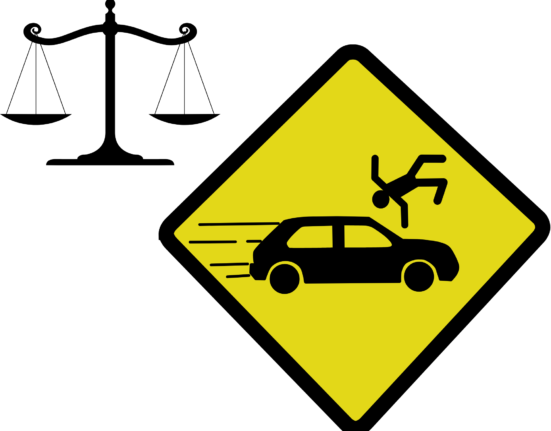What are the essential elements of a Crime- Written by Naphtal
Introduction to the elements of a Crime
In most countries, crimes are generally broken down into main categories; misdemeanours and felonies. For someone to be convicted of a crime and face the consequences of the conviction, the prosecutor must provide concrete evidence proving that the accused person indeed committed the crime.
To do this, the prosecutor relies on the five essential elements of a crime. Each element must be met before someone can be convicted of a crime.
So, what are the five elements of a crime? Read on to find out what each one of them is about in detail.
1. Actus Reus
The first element of a crime is Actus Reus which translates to “guilty act” in English. No law recognizes “thought” or “intent” as a crime. There must be an action or an omission of an action that results in a criminal offence.
To exemplify, if A plans to kill B, but doesn’t go through with it and doesn’t even try to do anything, there is no actus reus, and therefore no crime has been committed.
However, if A goes through with the plan and tries to kill B but fails, the actus reus is still met, and a crime has been committed, even though the person didn’t die.
Lack of action can also be considered a criminal act. In this case, the defendant was under a legal duty to act but failed to do so. For instance, a doctor who does not provide necessary medical care to their patient can be charged with a crime.
Lastly, while thoughts can’t be considered a crime, spoken words can. This usually presents a deviation from the conventional rule that only actions can be considered criminal.
2. Mens Rea (Intent)
The second element is Mens Rea which translates to “guilty mind.” It means that the prosecutor must prove not only that the act was committed but also that it was done with criminal intent.
For the mens rea to be met, three things must be satisfied: first, the accused person must know that their actions are criminal; second, they must have intended to commit the crime and finally, they must not have any legal excuse or justification for their actions.
The knowledge requirement is usually satisfied if the accused knew their actions constituted a crime. This can be proven through direct or circumstantial evidence.
On the other hand, the intent requirement means that the accused must have intended to commit the crime. This can be shown if their actions were purposeful and voluntary.
Lastly, the lack of excuse or justification requirement is usually satisfied if the accused knew their actions were criminal but still went ahead and did it anyway.
For example, if A knows that killing B is a crime but does it anyway, the mens rea is satisfied.
However, if A kills B in self-defence or under duress, then the lack of excuse or justification requirement is not met, and therefore the mens rea is not satisfied.
3. Causation
The third element of a crime is causation, meaning that the actus reus must be the result of the mens rea. In other words, the criminal act must result from the criminal intent.
To illustrate, if A intends to kill B but doesn’t go through with it, there is no causation, and therefore no crime has been committed.
However, if A goes through with the plan and tries to kill B but fails, the causation is still met, and a crime has been committed, even though the person didn’t die.
The prosecutor must prove beyond any reasonable doubt that the defendant’s actions were the cause of the victim’s death or injury. If there are multiple causes, the prosecutor must show that the defendant’s actions were the primary or substantial cause.
For causation to be satisfied, two things must be met:
First, there must be a causal link between the act and the result. Second, the result must be a natural and probable consequence of the act.
4. Harm
The fourth element of a crime is harm. The harm does not need to be physical; it can also be psychological.
However, not all crimes require harm. For instance, attempted murder does not require the victim to be harmed, as long as the accused intended to kill the victim and took some steps towards doing so.
In this case, the prosecutor must prove that the defendant’s actions caused some sort of harm to the victim. The type and extent of harm will determine the type of crime that has been committed.
For example, if the defendant’s actions caused death, the crime is murder. If the defendant’s actions caused serious bodily injury, the crime is aggravated assault.
5. Consent
Lastly, there is the element of consent. Under consent, the victim must not have consented to the act; otherwise, it is not considered a crime.
However, there are some exceptions to this rule. For example, if the victim is a child or mentally incapacitated, their consent is not valid, and any act committed against them will be considered a crime.
For the consent to be valid, three things must be met: first, the victim must have given their consent freely and willingly; second, they must have been capable of giving consent and third, they must have been given all the information about the act.
If any of these three things are not met, then the consent is invalid, and any act committed against the victim will be considered a crime.
Summary
For an act to be criminal, it must meet four requirements: actus reus, mens rea, causation, and harm.
The first two elements are the most important, as they define what is necessary for a crime to have been committed. The intent is also necessary for a crime to have taken place. Finally, the victim’s consent can negate an act’s criminality.
Also Read: Is Abortion Legal in India?
Author
This article is written by Naphtal. He is the brand manager at Legal Giant and a highly experienced content writer. Legal Giant is a leading lawyer referral site with clients all over the U.S. When Naphtal is not working, he enjoys spending time with his son and exploring nature.
![]()







Leave feedback about this